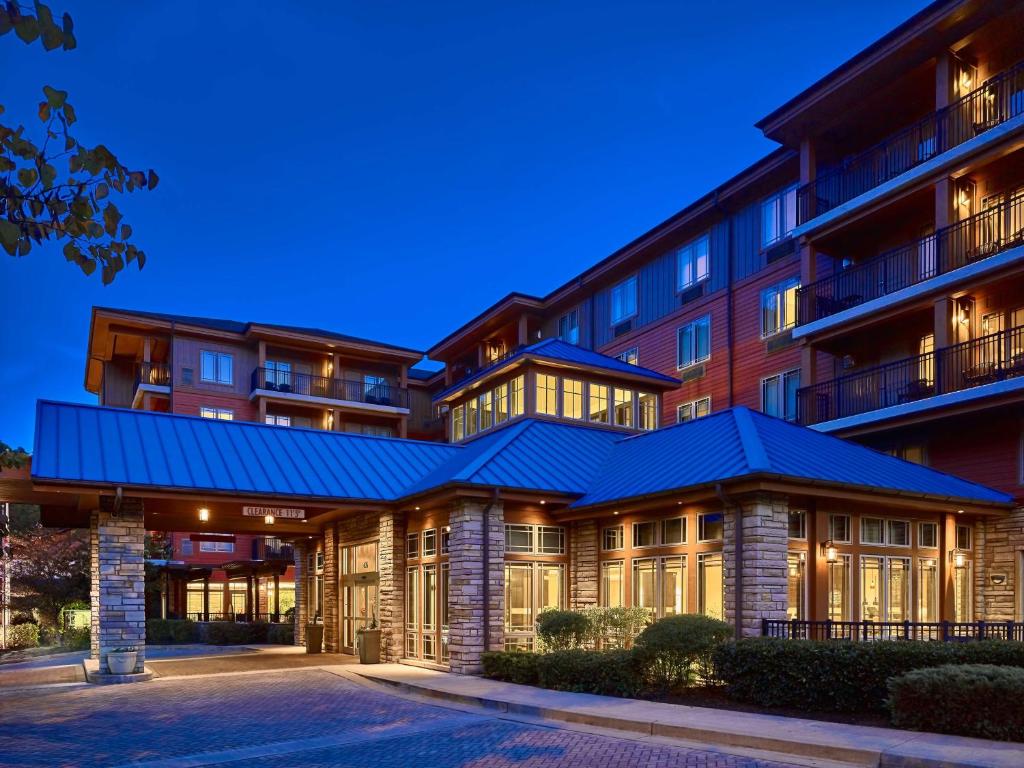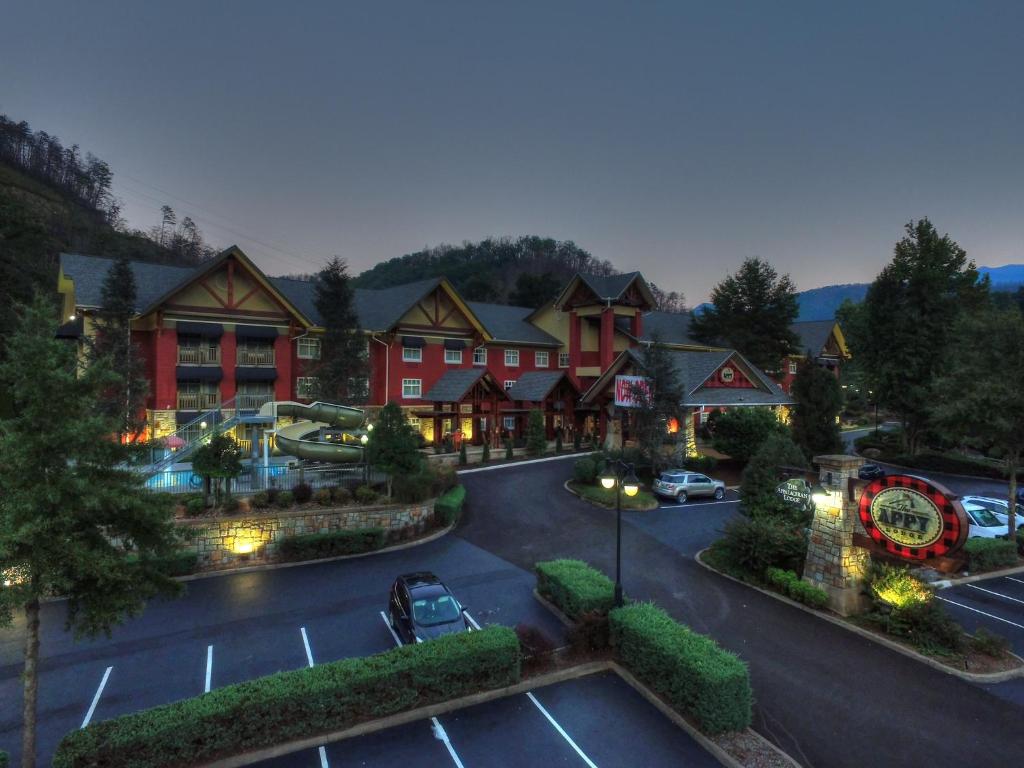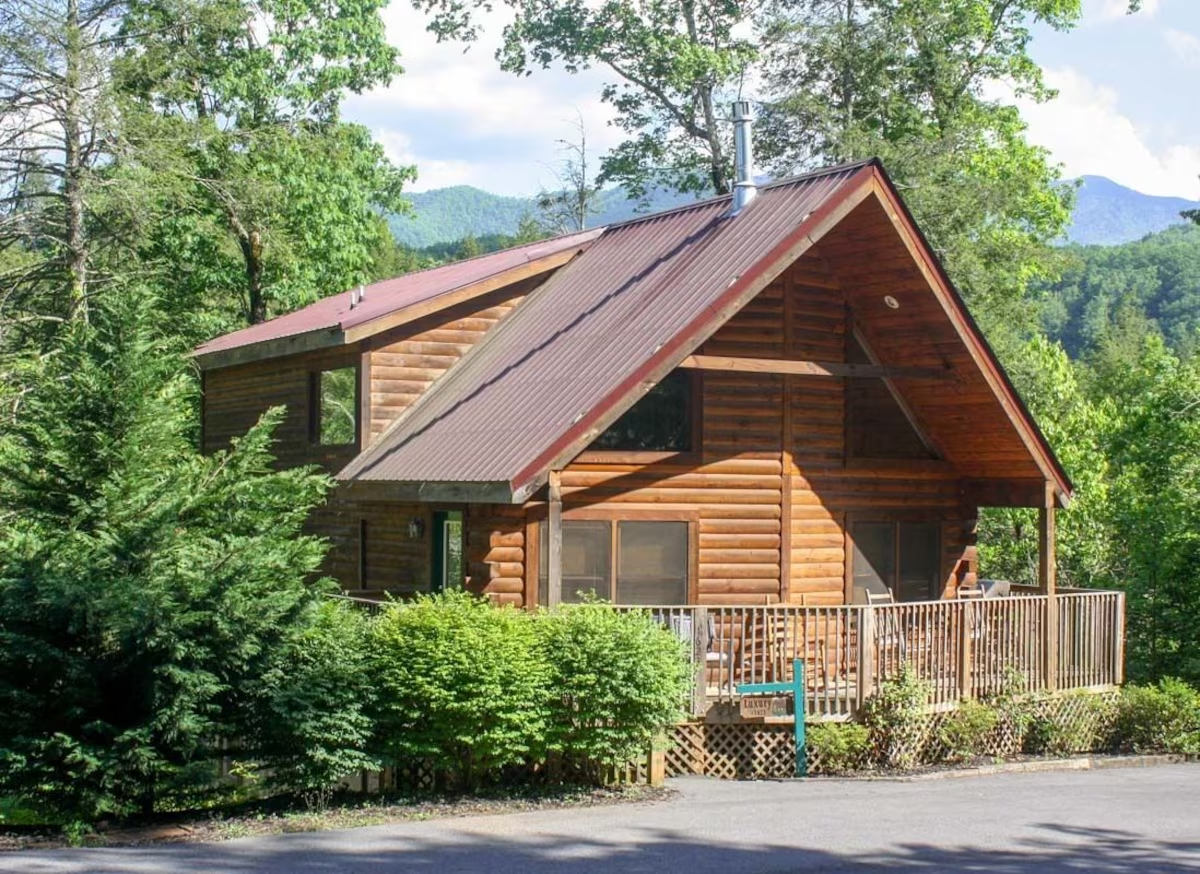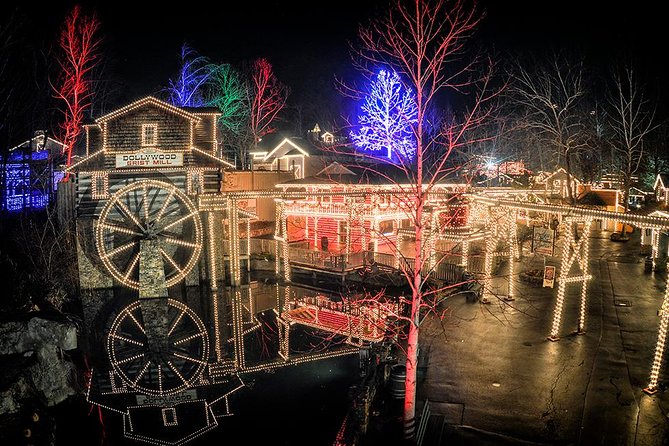More Than Just Mountains
When most travelers picture the Smokies, they imagine sweeping ridgelines, misty valleys, and that famous “smoky” haze that lingers over the treetops. And while those landscapes are every bit as breathtaking in person as they are on postcards, the truth is, the Smoky Mountains are so much more than a scenic backdrop. They’re a living, breathing community—one where the rhythm of life is set by the turning of the seasons, the laughter of families gathering for Sunday dinner, and the quiet rustle of leaves underfoot on a trail few tourists ever find.

The locals here see the Smokies differently. To them, these mountains aren’t a quick getaway or a weekend bucket-list stop—they’re home. The trails you hike for a few hours are the same ones where generations have hunted, gathered, and celebrated family milestones. The small shops lining the streets of Gatlinburg aren’t just quaint—they’re lifelines for families who’ve poured decades of love into their craft. When you step into this part of Tennessee, you’re stepping into a way of life that has been shaped by hard work, deep roots, and an unshakable love for the land.
This guide will take you beyond the visitor center brochures and into the heart of the Smokies as locals know them. You’ll learn when to go for fewer crowds and better views, which trails offer not only beauty but peace, and where you can find meals that taste like home. You’ll hear the unspoken rules of the road, the secrets for spotting wildlife without putting yourself—or the animals—in danger, and the kind of advice you can only get from someone who calls these mountains “my backyard.”
Before you plan your Smokies getaway, make sure you’ve got a comfortable place to return to after those epic adventures. Locals know the right lodging can make or break your trip—find the best options here.
Timing Is Everything – When Locals Go (and When They Don’t)
One of the biggest mistakes visitors make is assuming the Smoky Mountains look and feel the same no matter when you come. Locals know better. The rhythm of the Smokies changes with the seasons—and timing your visit just right can turn a good trip into an unforgettable one.
Spring brings the mountains to life in a painter’s palette of pinks, purples, and yellows. Wildflowers blanket the forest floor, and rivers swell with snowmelt, creating some of the year’s most photogenic waterfalls. If you’re a nature lover, April and early May offer mild weather, smaller crowds, and the kind of fresh mountain air that makes you want to linger on every overlook.
Then there’s autumn—arguably the Smokies’ showstopper. From late September to early November, the hills transform into a kaleidoscope of fiery reds, deep oranges, and golden yellows. It’s magical, yes—but it’s also the busiest time of year. Locals tend to visit their favorite spots mid-week, avoiding the weekend rush when parking lots overflow and traffic slows to a crawl. If fall colors are on your must-see list, take a page from their playbook: arrive early, pack patience, and plan your stops in advance.
Winter is a quiet treasure. The mountains wear a softer palette—silvery tree branches, frost-kissed meadows, and occasional snow-capped peaks. While some attractions close, the peace is unmatched. Locals often use this time to explore without the bustle, knowing they can wander trails or sip coffee downtown without feeling rushed.
If you’re visiting during peak season, book your stay early—locals know the best spots fill up fast. Reserve your Smoky Mountain home base today.
The Unwritten Rules of the Road and Trails
Every destination has its own set of unspoken rules, and in the Smokies, following them can mean the difference between being just another tourist and being a welcomed guest. While official signs will tell you the basics, locals have their own code of courtesy that makes the experience smoother for everyone.
On the scenic drives—whether it’s the world-famous Newfound Gap Road or the beloved Cades Cove Loop—patience is everything. These aren’t highways; they’re slow, winding ribbons meant to be savored. If you want to pull over for photos (and you will), use the designated pull-offs rather than stopping in the middle of the road. Locals appreciate it when traffic flows smoothly, especially during peak seasons when a single stopped car can cause a half-mile backup.
On the trails, etiquette is just as important. Uphill hikers get the right of way—it’s simply easier for those heading down to step aside. Keep your voice down, too. The Smokies are one of the few places left where you can hear nothing but the wind in the trees and the sound of your own footsteps. Loud music, shouting, or letting your phone’s speaker blare robs everyone else of that rare peace. And then there’s the golden rule of wildlife: observe from a safe distance, no matter how photogenic that black bear or elk may be.
Ultimately, it’s about respect—respect for the land, for other visitors, and for the people who call this region home. Following these unwritten rules doesn’t just make your trip smoother—it helps keep the Smokies the kind of place you’ll want to return to again and again.
Where the Locals Actually Eat (Hint: Not Always on the Main Strip)
Gatlinburg’s main strip may be where the neon lights shine and the foot traffic hums, but locals know that some of the best meals in town are found a few turns off the beaten path. Sure, you’ll find plenty of restaurants in the heart of downtown, but step just a bit further and you’ll uncover kitchens where recipes have been passed down like family heirlooms.
For breakfast, there’s nothing like a plate of fluffy biscuits smothered in sausage gravy at a diner where the coffee is poured before you even ask. Locals head to these small spots because they know the faces behind the counter—and the stories that come with them. Come lunchtime, you might find yourself in a BBQ joint that smells like it’s been smoking pork since sunrise, where the sauce is tangy, the hush puppies are golden, and your sweet tea never runs dry.
And let’s not forget dinner. Whether it’s a cabin-style steakhouse with crackling fireplaces or a hidden trout house along the river, these places offer more than just food—they offer connection. Conversations stretch longer, flavors linger deeper, and you walk out feeling not just full, but part of something.
For those visiting, dining like a local is a way to taste the Smokies as they truly are. You’re not just grabbing a bite—you’re joining a tradition that’s been feeding this community for generations.
If you want to experience these flavors without worrying about long drives after dark, book lodging close to Gatlinburg’s hidden dining gems so you can wander from your table to your bed in minutes.
Overlooked Spots Worth Your Time
While the big-name attractions in the Smokies grab the headlines—and the crowds—there’s a quieter side to Gatlinburg and its surrounding mountains that many visitors miss entirely. Locals often gravitate toward these lesser-known places, not because they’re trying to keep them secret, but because they offer something priceless: room to breathe.
Take the Roaring Fork Motor Nature Trail, for example. While thousands flock to Cades Cove each day, Roaring Fork winds you through moss-covered log cabins, old-growth forests, and tumbling streams that feel like they’ve been waiting just for you. It’s a place where history and nature intertwine without the need for fanfare.
Or consider the less-traveled trails, like the Porters Creek Trail in Greenbrier. Come spring, wildflowers explode in color here, but you won’t be jostling for space to take a photo. Instead, you’ll hear the water’s constant chatter as you walk, the air scented with rhododendron and mountain laurel.
Even in town, there are overlooked gems. Small art galleries, tucked-away coffee shops, and family-run craft studios offer a side of Gatlinburg that’s more personal, less polished—and often more memorable. It’s the kind of experience that makes you feel like you’ve discovered a secret, even if the locals have known it all along.
Choosing lodging near these hidden corners means you can enjoy them at their quietest—see the best options here before they’re booked up.
Wildlife Wisdom – Respect and Safety
Spotting wildlife in the Smokies can feel like a once-in-a-lifetime moment—especially when it’s a black bear wandering across a meadow or a herd of elk grazing at dawn. But for locals, these encounters come with an unspoken responsibility: you admire from a distance, you never interfere, and you leave no trace that you were there.
The first and most important rule? Keep your distance—at least 50 yards for bears and elk. It’s not just for your safety; it’s for theirs. A wild animal that becomes comfortable around humans can quickly become a danger to both sides, and in the Smokies, “a fed bear is a dead bear” isn’t just a saying—it’s a sad reality. Resist the urge to toss them food or get a closer shot for Instagram. Your photos will be just as stunning if you zoom in, and your conscience will be clear knowing you left them wild.
Safety also means being prepared. Carry binoculars for those far-off sightings, keep your car doors locked when food is inside, and never block traffic just to watch an animal. If you’re hiking, make a little noise so you don’t surprise a bear, and keep pets leashed at all times—both for their safety and the safety of the creatures that live here.
Locals will tell you: respecting the wildlife is part of respecting the Smokies themselves. The animals are as much a part of this place as the trees, rivers, and ridgelines, and treating them with care ensures they’ll be here for generations to come.
If you want a chance to see wildlife in the quieter hours, choose lodging that puts you close to the park’s best viewing areas so you can start your mornings in nature’s front row.
Supporting the Community While You Visit
When you visit the Smokies, you’re not just stepping into a national park—you’re stepping into someone’s hometown. The mountains may be the main draw, but it’s the people who give this place its heartbeat, and every choice you make as a visitor can help keep that heartbeat strong.
Start small: buy your coffee from an independent café instead of a chain. That latte isn’t just caffeine—it’s supporting the barista who knows every regular by name, the baker who gets up before sunrise, and the local roaster who sources beans with care. The same goes for meals, souvenirs, and even gear rentals. When you shop local, more of your money stays in the community, helping the very people who make Gatlinburg worth visiting in the first place.
You can also make a difference with your time. Join a ranger-led cleanup, attend a local craft fair, or simply strike up a conversation with an artisan in the Great Smoky Arts & Crafts Community. You’ll walk away with more than just a purchase—you’ll have a story to take home, one that connects you to the people behind the place.
And remember: support isn’t always about spending. Respecting the land, following trail etiquette, and being a considerate guest all ripple out into the community in ways that matter. Locals notice when visitors care—and that appreciation makes you feel less like a tourist and more like a temporary neighbor.
If you want to stay in the heart of Gatlinburg’s community, choose lodging that keeps you close to local shops, cafés, and cultural events so your trip supports the town as much as it inspires you.
How to Slow Down and Soak It In
The Smokies are beautiful in motion—water rushing over rocks, deer grazing in the mist, sunlight shifting across the ridgelines—but their real magic happens when you stop. In a place where it’s tempting to pack your itinerary with every trail, every overlook, and every attraction, the secret to a truly memorable trip is often doing less.
Start by building in moments without a plan. Linger over breakfast on a balcony with a mountain view instead of rushing out the door. Let yourself wander a side street without worrying about what’s “next.” Sit on a riverside bench and listen—really listen—to the water, the birds, the hum of wind through the trees. Those pauses give you space to notice details you’d miss if you were sprinting from one landmark to another.
Locals have mastered this art. They know that the Smokies aren’t going anywhere, and the best way to experience them isn’t by racing to “check things off,” but by giving each place a chance to leave its mark on you. Whether it’s a lazy afternoon drive on a quiet loop road, a slow stroll through a craft shop, or a peaceful sunset from your cabin porch, slowing down lets the Smokies seep into your memory in a way that lasts long after you leave.
Choosing lodging that encourages these moments—whether it’s a cozy cabin tucked into the hills or a riverside inn steps from the action—means you’re never far from the perfect spot to simply stop, breathe, and let the mountains work their magic.
Visiting the Smokies the Way Locals Hope You Will
Visiting the Smokies isn’t just about checking off attractions—it’s about embracing the rhythm of a place that has been shaped by both nature’s patience and a community’s care. The locals’ advice—whether it’s finding a breakfast spot tucked away from the crowds, choosing a trail few have heard of, or lingering long enough to watch the light change on the mountains—comes from generations of living in harmony with these hills.
If you take anything from their perspective, let it be this: the Smokies reward those who show up with curiosity, respect, and a willingness to slow down. You’ll find beauty here whether you’re on a mountaintop or in a tiny café, but the most meaningful memories will come when you give yourself permission to experience the small things fully.
So breathe deeply. Wander slowly. Let the stories, flavors, and landscapes of the Smokies find their way into your heart. And when you leave, you’ll carry more than souvenirs—you’ll carry a connection to this place that feels a little like coming home.
To make the most of your time and truly immerse yourself in both the mountains and the community, choose lodging that keeps you close to the experiences locals love most.

















Leave a Reply